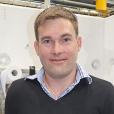Leveraging over half a century of knowledge in the safe management of radioactive waste
ANSTO's Chief Nuclear Officer shares insights on the safe management of Australia's nuclear waste.

Showing 221 - 240 of 273 results
ANSTO's Chief Nuclear Officer shares insights on the safe management of Australia's nuclear waste.
The BRIGHT Project will expand the beamline infrastructure of the Australian Synchrotron to increase both its capacity and capabilities.

ANSTO User Meeting 2021 - Speakers

3D models of multilayered structures on engineering scale from nanoscale damage profiles.
My name is Paris and I am a lecturer at the Design Factory Melbourne, a Graduate of architecture and a member of the MedTech Victoria research team at Swinburne.


Accurate low level tritiated water (HTO) data is an essential tool for groundwater dating and understanding groundwater recharge processes.

Sample environments, Data analysis and reduction on the Koala instrument.
With a well-established portfolio of nuclear research and the operation of Australia's only nuclear reactor OPAL, ANSTO scientists conduct both fundamental and applied research on fuel for current, advanced, and future nuclear technology systems.

The new Micro Computed Tomography (MCT) beamline is the first instrument to become operational as part of the $94 million Project BRIGHT program, which will see the completion of eight new beamlines at ANSTO’s Australian Synchrotron.

Samantha is a Senior Health Physicist with Radiation Protection Services.

This state-of-the-art metastable-exchange optical-pumping helium-3 polarising system enables polarisation-analysis experiments on five of our existing instruments.


The Imaging and Medical beamline (IMBL) is a flagship beamline of the Australian Synchrotron built with considerable support from the NHMRC. It is one of only a few of its type, and delivers the world’s widest synchrotron x-ray ‘beam’.